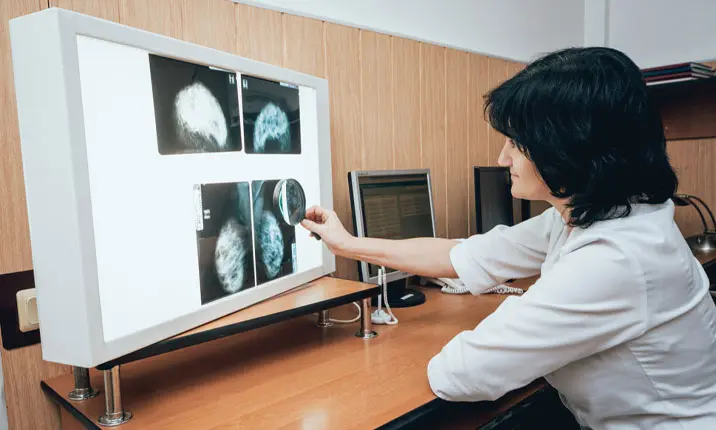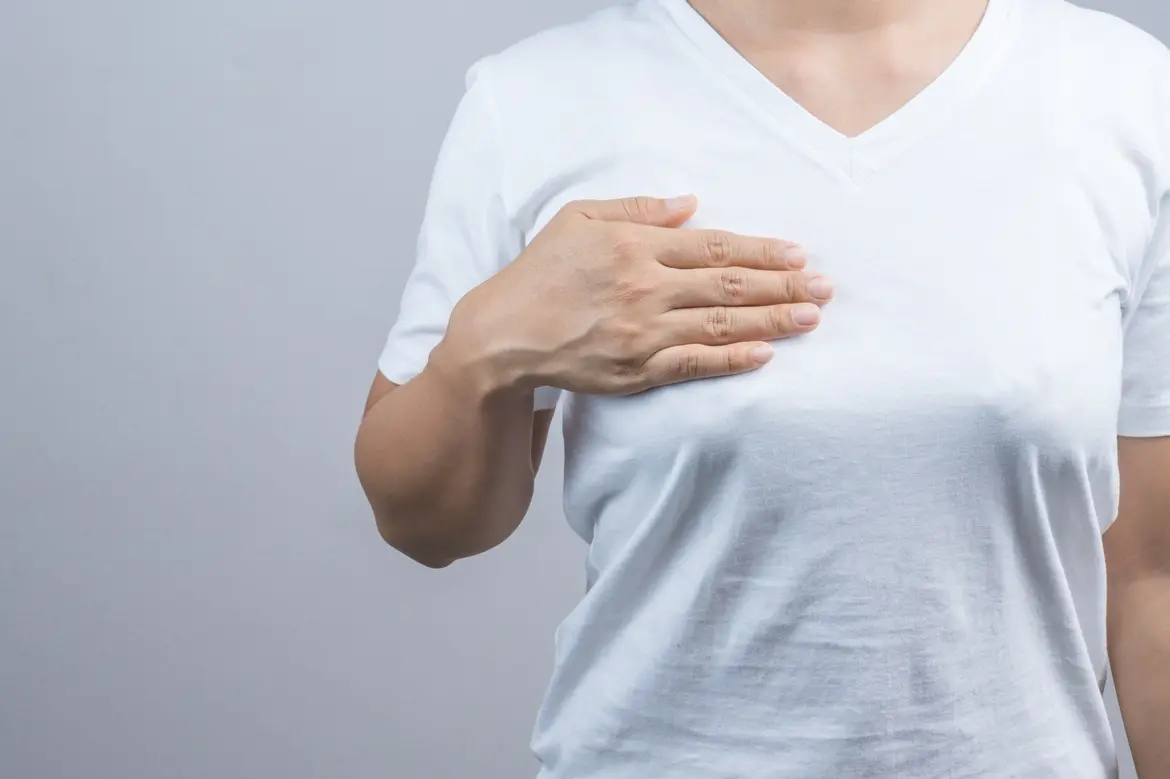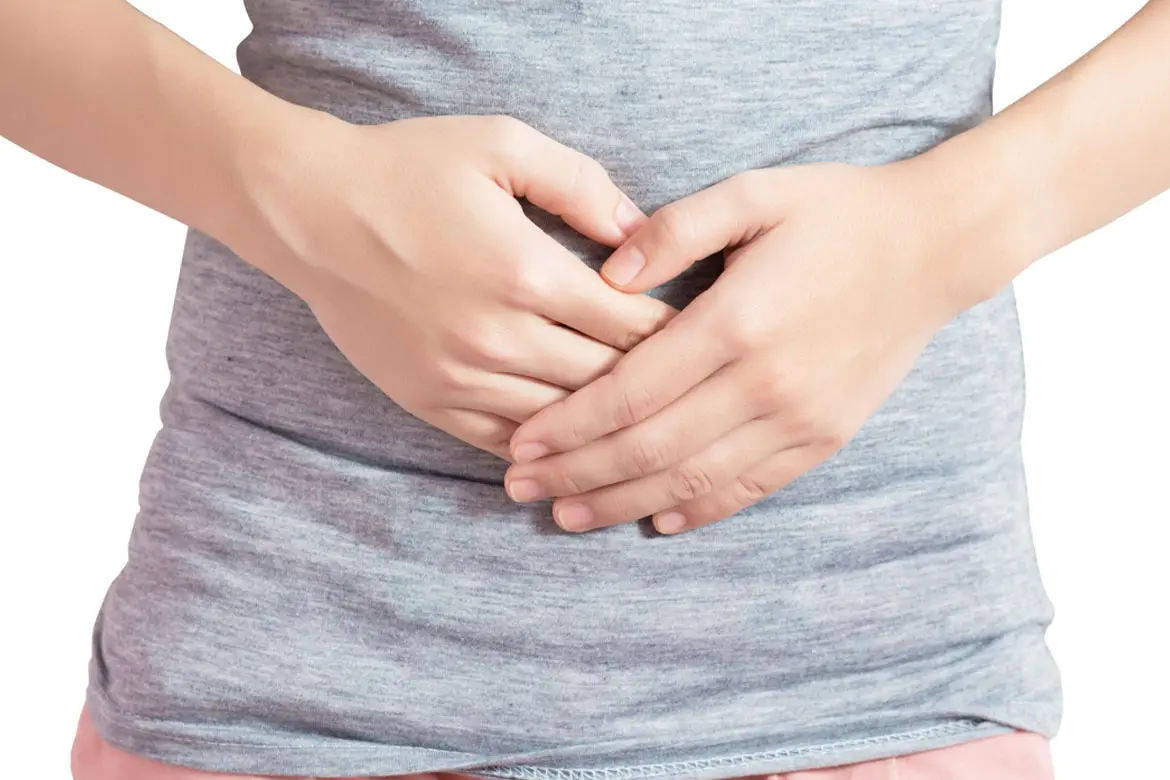What is a breast biopsy?
A breast biopsy is a simple medical procedure which involves taking tissue samples or fluid from a lump or area in the breast. These cells are then examined under a microscope and sent for further testing to check for traces of cancer.
How to find breast lumps
Screenings such as mammograms and breast ultrasounds are useful in finding breast lumps but currently, a breast biopsy is the only way to know if the lump is cancerous. The good news is that not all lumps are cancerous and 80% of breast biopsies do not turn out to be cancer.
What is the purpose of a breast biopsy?
A biopsy will usually be recommended if your doctor becomes concerned with the results from a routine breast examination, mammogram, ultrasound or Magnetic Resonance Imaging (MRI) or a concerning clinical finding.
A biopsy may also be ordered if you or your doctor feel a lump or thickening in the breast, and you have unusual nipple or areolar changes, such as bloody discharge, dimpling skin, crusting or scaling as these are all symptoms of a breast tumour.
Types of breast biopsies
There are different ways to do a breast biopsy and the method will depend on the location and size of the lump, whether there are multiple lumps, if you have other medical issues, and on your personal preferences.
Fine-needle aspiration biopsy
This is the simplest type of breast biopsy where your doctor will insert a very thin needle attached to a syringe into the lump. This is used to examine lumps that can be felt during a clinical breast exam and is a fast way to tell the difference between a fluid-filled cyst and a solid mass. The latter requires a tissue sample to be collected. This procedure can be done under local anaesthesia.
Core needle biopsy
In a core needle biopsy, your doctor will use a larger, hollow needle to extract several small tissue samples from the lump (a few mm in size). A small incision will be made for the needle to enter the breast. This process is usually aided by an ultrasound to locate the lump.
Vacuum-assisted needle biopsy
This is an improved form of core needle biopsy because it allows larger samples to be removed for testing. In some cases, small lumps can also be completely excised during the biopsy. This procedure is versatile and can be used for both calcifications and breast lumps. Just like core needle biopsy, it can be done under ultrasound guidance. In some cases, localisation and visualisation of the lump or calcifications are better done using mammogram or MRI to guide the biopsy.
Open breast biopsy
Open breast biopsy is the most invasive, and you will be put under general anaesthesia during the procedure so that you won’t be awake for the surgery. An open breast biopsy might be recommended to remove abnormal breast tissue to look for breast cancer. A metal marker may be left in the breast in case there is a need for further removal of breast tissue if the mass turns out to be a cancerous tumour.
Is a breast biopsy painful?
It is a relatively painless procedure. You may feel a slight discomfort in the area where local anaesthesia is administered but you should not feel pain during the biopsy itself.
What are the risks involved in a breast biopsy?
Potential risks could include:
- Infection or bleeding. An infection or bleeding in the area where the biopsy was done.
- Bruising and swelling of the breast. A core needle biopsy is more likely to result in bruising than a fine needle biopsy. Bruising may take several weeks to completely resolve.
- Changes in appearance. Changes in appearance of the breast depending on how much tissue was removed and how the breast heals, and additional treatments or surgery depending on the results of the biopsy.
It is important to contact your doctor if you eventually develop a fever, experience any redness or warmth in the area of the biopsy, or if you have any unusual drainage from the biopsy area as these can be symptoms of an infection requiring immediate treatment.
How do you prepare for a breast biopsy?
Before a breast biopsy, do tell your doctor about any allergies you have, especially with regards to allergies or non-responsiveness to anaesthesia, and any supplements or medications you are currently taking including aspirin or other blood-thinning medications.
If an MRI scan is recommended by your doctor, do inform them of any electronic devices implanted in your body such as a cardiac pacemaker, or if you are pregnant or suspect you could be pregnant as an MRI whilst considered safe for adults, isn’t recommended for unborn babies.
Do wear a bra to your appointment as a cold pack may be placed against the biopsy area after the procedure to help with any inflammation and pain. Your bra can help keep the cold pack in place as well as provide support for your breast.
What happens after a breast biopsy?
Do leave the bandage on for 24 hours after the biopsy, and avoid showering during that time. Do not remove the transparent plastic dressing over the wound until 3 days after the biopsy. Painkillers may be taken if you feel pain or discomfort but do not take Aspirin or medications containing Aspirin. Do not participate in strenuous activities for 24 hours and no swimming for a week.
The biopsy results will typically take 2 – 3 days to be processed and will be sent to your surgeon. Do make an appointment with your surgeon to review the results of your biopsy and have the area examined.
In conclusion, whilst there are definitely many techniques for breast biopsy, there are differences in the levels of invasiveness, scarring, incision size, recovery time, types of anaesthesia and location where the procedure is performed.
It is very important to consult your doctor to find out which biopsy technique is the best fit for your situation.














